Address
304 North Cardinal
St. Dorchester Center, MA 02124
Work Hours
Monday to Friday: 7AM - 7PM
Weekend: 10AM - 5PM
Address
304 North Cardinal
St. Dorchester Center, MA 02124
Work Hours
Monday to Friday: 7AM - 7PM
Weekend: 10AM - 5PM
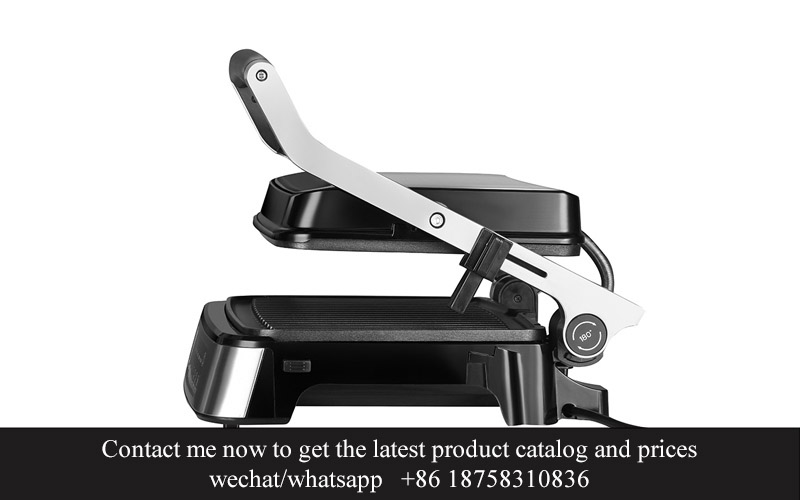
In a world where culinary innovation meets environmental consciousness, the evolution of kitchen appliances has reached new heights. The air fryer, once a staple in home kitchens, has now become a game-changer in professional cuisine, offering a healthier and more sustainable cooking experience. As we delve into the advancements in air fryer technology, we uncover a landscape ripe with possibilities and a future that promises to redefine the way we cook.
The culinary landscape is undergoing a remarkable transformation, and at the heart of this revolution are advanced air fryer factories. These cutting-edge facilities are not just producing kitchen appliances; they are shaping the very essence of restaurant kitchens around the globe. Let’s delve into how these factories are revolutionizing the industry.
In the past, deep-frying was a staple in restaurant kitchens, known for its ability to create crispy, flavorful dishes. However, the health implications and environmental concerns associated with traditional frying methods have spurred a demand for alternative cooking solutions. Enter the restaurant-grade air fryer, a game-changer that promises the same indulgent taste without the guilt.
These air fryer factories are at the forefront of innovation, engineering devices that mimic the traditional frying experience but with a healthier twist. The technology behind these fryers is nothing short of remarkable. By using hot air to circulate around the food, they achieve a golden, crispy exterior while reducing the amount of oil needed by up to 80%. This not only cuts down on calories but also on the hassle of oil cleanup, making them a favorite among busy chefs.
The design of these air fryers is not just about health; it’s also about efficiency and ease of use. The sleek, modern aesthetics of these appliances make them a stylish addition to any kitchen. The intuitive interfaces and user-friendly controls ensure that even the most inexperienced cooks can achieve restaurant-quality results with ease.
As the demand for healthier eating continues to rise, these factories are responding with a variety of models that cater to different needs. From countertop units perfect for small-scale operations to larger, commercial-grade fryers designed for busy restaurants, the options are vast. This diversity means that chefs can choose the air fryer that best suits their specific menu and kitchen layout.
The quality of these air fryers is second to none, thanks to rigorous quality control processes implemented at the factories. These processes ensure that each unit meets the highest standards of performance, safety, and durability. From the materials used to the precision engineering, every aspect of these fryers is designed to withstand the rigors of professional use.
One of the most significant advantages of these air fryers is their versatility. They can be used to cook a wide array of dishes, from crispy French fries and golden onion rings to tender chicken and even desserts. This flexibility allows chefs to diversify their menus without compromising on taste or quality.
The energy efficiency of these fryers is another aspect that cannot be overlooked. With the increasing emphasis on sustainability, these appliances are a greener choice for restaurants looking to reduce their carbon footprint. By consuming less energy and producing less waste, these air fryers are contributing to a more eco-friendly culinary environment.
In terms of market trends, the demand for restaurant-grade air fryers is soaring. Consumer awareness of health and wellness is driving this trend, and as more people seek out healthier eating options, restaurants that offer these dishes are gaining a competitive edge. The factories that produce these air fryers are well-positioned to capitalize on this growing market, as they continue to innovate and improve their products.
The innovation doesn’t stop at the fryer itself. These factories are also investing in research and development to create accessories and add-ons that enhance the functionality of the air fryers. From special trays for different types of food to temperature control systems that optimize cooking times, the possibilities are endless.
In conclusion, the impact of advanced air fryer factories on the restaurant industry is profound. By offering a healthier, more efficient, and versatile alternative to traditional frying methods, these factories are changing the way we think about cooking. As the trend towards healthier eating continues to gain momentum, it’s clear that these air fryers are not just a passing fad but a fundamental shift in how we approach culinary preparation in professional kitchens.

The restaurant industry is undergoing a culinary revolution, and at the heart of this transformation is the rise of restaurant-grade air fryers. These appliances are not just a passing trend; they represent a significant shift in how chefs approach cooking, offering a healthier, more efficient, and versatile option for kitchen professionals. Here’s what you need to know about this burgeoning technology.
These air fryers are designed with the demands of a commercial kitchen in mind. They are built to withstand the rigors of constant use, with durable materials and robust construction. The commercial-grade components ensure that these fryers can handle high-volume cooking without compromising on performance or safety.
One of the standout features of restaurant-grade air fryers is their ability to replicate the taste and texture of deep-fried foods while using significantly less oil. This is achieved through a combination of powerful fans and heating elements that circulate hot air around the food, creating a crispy exterior and a tender interior. Chefs are now able to offer their patrons the same indulgent flavors without the guilt associated with traditional frying methods.
Energy efficiency is another key advantage. These air fryers use up to 80% less oil than traditional fryers, which not only reduces costs but also has a positive environmental impact. The reduced oil usage also means that the food is lower in calories and fat, appealing to health-conscious diners and aligning with the industry’s growing focus on wellness.
In terms of versatility, restaurant-grade air fryers can cook a wide array of dishes. From crispy French fries and golden onion rings to succulent chicken wings and even baked goods, these appliances can handle it all. This flexibility allows chefs to diversify their menus and experiment with new recipes, enhancing the dining experience for customers.
The technology behind these air fryers is also worth noting. Many models come with advanced features such as adjustable temperature controls, timers, and pre-programmed settings. This level of precision ensures that chefs can achieve consistent results every time, a crucial factor in maintaining high standards in a busy kitchen.
Safety is paramount in a commercial kitchen, and restaurant-grade air fryers are designed with this in mind. They often include features like automatic shut-off, overheat protection, and cool-touch exteriors to prevent accidents and burns. These safety features are especially important in environments where there are multiple cooks and a high risk of spills.
The market for restaurant-grade air fryers is expanding rapidly. As more chefs discover the benefits of these appliances, the demand is increasing. Suppliers are responding by offering a wider range of models, each tailored to specific needs and preferences. From countertop models to integrated units, there’s an air fryer to fit every kitchen layout.
One of the most exciting aspects of this trend is the potential for innovation. As manufacturers continue to refine their products, we can expect to see even more advanced features and capabilities. For example, some manufacturers are exploring the integration of smart technology, allowing chefs to monitor and control their air fryers remotely.
In the realm of sustainability, restaurant-grade air fryers are also making waves. With the increasing emphasis on reducing food waste and using resources more efficiently, these appliances are a perfect fit. They can help restaurants reduce their carbon footprint while still delivering delicious, high-quality food.
For operators looking to improve their kitchen’s efficiency and offer healthier options to their customers, restaurant-grade air fryers are an excellent choice. They represent a smart investment that can pay off in terms of both cost savings and customer satisfaction.
In conclusion, the rise of restaurant-grade air fryers is a testament to the industry’s commitment to innovation and improvement. These appliances are not just a cooking tool; they are a catalyst for change, pushing the boundaries of what’s possible in the kitchen and setting a new standard for culinary excellence.
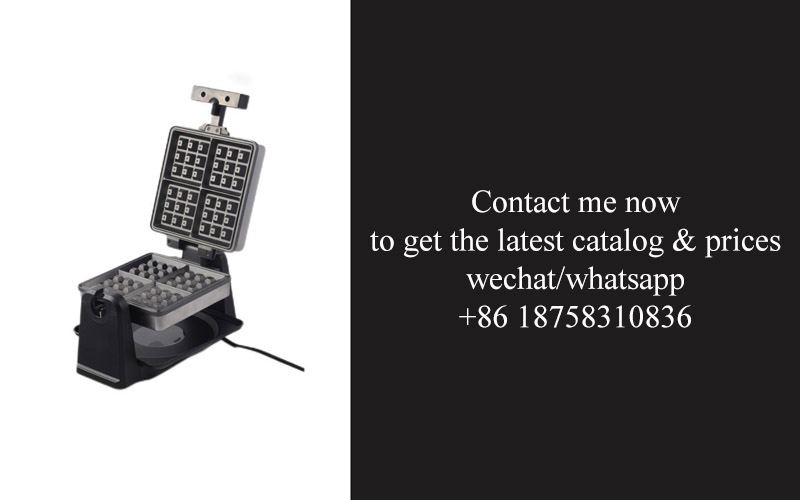
Modern factories are at the forefront of transforming the landscape of kitchen appliances, especially in the realm of innovative designs. The marriage of cutting-edge technology and aesthetic appeal has led to a revolution in how we perceive and use these tools in our daily lives. Here’s a glimpse into how these factories are shaping the future:
In recent years, we’ve seen a shift from traditional, boxy kitchen appliances to sleek, space-saving designs. Modern factories are leading this trend by creating appliances that are not only functional but also a stylish addition to any kitchen. From induction cooktops that blend seamlessly into countertops to compact refrigerators that fit perfectly into nooks, the design evolution is remarkable.
The integration of smart technology into kitchen appliances is another significant change. Factories are now producing machines that can be controlled via smartphones, allowing users to monitor and adjust settings remotely. These smart appliances are not just convenient but also energy-efficient, with features like self-cleaning ovens and programmable refrigerators that optimize cooling for food preservation.
In the world of cooking, safety is paramount, and modern factories are addressing this concern with innovative designs. Appliance exteriors are becoming more heat-resistant, and controls are now user-friendly, featuring touchscreens and intuitive interfaces that minimize the risk of burns and accidental misuse. Additionally, advanced sensors are built into appliances to detect and prevent overheating, a feature that is particularly important for ovens and ranges.
Eco-conscious consumers are increasingly looking for sustainable appliances, and factories are responding by integrating environmentally friendly materials into their products. From bamboo handles on toasters to stainless steel bodies made from recycled materials, the commitment to sustainability is evident. These eco-friendly designs not only reduce the environmental footprint but also offer a longer lifespan, as the materials are often more durable.
Functionality is at the heart of innovation, and modern factories are pushing the boundaries by incorporating multi-functional appliances. For instance, a single countertop unit might double as a coffee maker, a juicer, and a blender. This consolidation of tools not only saves space but also simplifies the kitchen setup, making it easier for busy cooks to multitask without clutter.
Customization is another trend that modern factories are capitalizing on. Users can now choose from a variety of colors, finishes, and configurations to match their personal style and kitchen decor. Whether it’s a matte black microwave or a polished silver range, the ability to personalize kitchen appliances has opened up new possibilities for creative kitchen design.
In terms of energy efficiency, modern factories are setting new standards. Appliances are now equipped with advanced insulation and more efficient motors, resulting in significant energy savings. These energy-saving features are not only beneficial for the environment but also for consumers’ utility bills, making them a smart choice for both the planet and the pocket.
Accessibility is also a key consideration in modern appliance design. Factories are developing controls that are easier to use for people with disabilities, ensuring that everyone can enjoy the convenience of modern kitchen appliances. This includes larger buttons, voice-controlled systems, and appliances that can be operated from a seated position.
Finally, the use of materials in modern kitchen appliance design is a testament to the industry’s commitment to innovation. From lightweight yet durable aluminum to corrosion-resistant stainless steel, the variety of materials available allows for endless design possibilities. This also means that appliances can be more durable, with finishes that withstand the test of time.
In conclusion, the modern factory’s approach to kitchen appliance design is redefining what it means to be efficient, safe, sustainable, and stylish. As these innovations continue to evolve, it’s clear that the future of kitchen appliances will be characterized by smart, versatile, and beautifully crafted devices that enhance the cooking experience in every possible way.
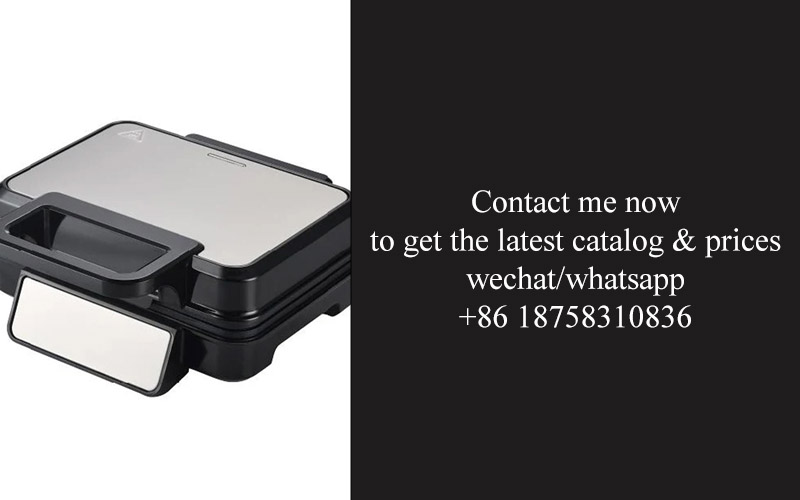
In the quest to perfect the art of cooking, air fryers have emerged as a marvel of modern technology. These kitchen gadgets have transcended their humble origins to become a staple in both home and professional kitchens. The science behind the sizzle in these devices is a blend of innovation and practicality that has redefined how we think about frying and healthy eating.
The core of an air fryer’s technology lies in its ability to mimic the frying process using minimal oil. Instead of immersing food in a deep bath of grease, air fryers use a circulating fan to circulate hot air around the food. This rapid air circulation cooks the food by creating a convection effect, which essentially browns and seals in the flavors without the excess fat typically found in traditional fried foods.
One of the key technologies that enable this is the precise temperature control. Modern air fryers are equipped with thermostats that can maintain temperatures within a narrow range, often reaching up to 400°F (200°C). This precise heat management ensures that the food is cooked evenly and achieves the perfect golden-brown finish that we associate with fried foods.
Advanced heating elements play a crucial role in the cooking process. These elements are designed to quickly and efficiently distribute heat throughout the appliance. The heat is then channeled into the air, which is then directed at the food using strategically placed fans. This targeted heating not only ensures even cooking but also reduces the likelihood of burning or overcooking certain foods.
Another technological breakthrough in air fryers is the use of non-stick coatings. These coatings are applied to the interior surfaces of the fryer baskets and pots to prevent food from sticking and to make cleanup a breeze. The non-stick materials used are often PTFE (Teflon) or ceramic, which are heat-resistant and safe for food contact.
The science doesn’t stop at the cooking process; it also extends to the air fryer’s design. Many modern air fryers feature a spacious interior that can accommodate a variety of food sizes and quantities. The larger capacity not only allows for cooking larger batches but also means you can cook different types of food at the same time without cross-contamination.
Innovation in air fryer design also includes features like digital displays and programmable settings. These user-friendly interfaces allow for precise control over cooking time and temperature, ensuring that even the most complex recipes can be replicated at home with ease. The ability to set specific cooking times and temperatures for different food types has made air fryers versatile cooking companions for everything from chicken wings to roasted vegetables.
Energy efficiency is another area where technology has made significant strides. Air fryers use significantly less energy than traditional deep fryers, making them a more sustainable option for both commercial and domestic use. The reduced energy consumption translates to lower utility bills and a smaller carbon footprint, which is a growing concern for environmentally conscious consumers.
The technology within air fryers also includes features that promote health and wellness. For instance, some models are designed to remove excess fat from cooked foods. This is achieved by the fact that the hot air draws out moisture from the food, along with some of the fat. As a result, air-fried foods can be up to 80% lighter in fat compared to their deep-fried counterparts.
The science behind the sizzle in air fryers is also about safety. Many models are designed with automatic shut-off features to prevent overheating and potential fires. These safety features, combined with the fact that air fryers operate at a lower temperature than deep fryers, significantly reduce the risk of kitchen accidents.
In conclusion, the cutting-edge technology in air fryers is a testament to human ingenuity. From the precise heat management to the smart design features, these devices have revolutionized how we approach cooking. As technology continues to evolve, we can expect even more innovative advancements that will further enhance the air fryer’s role in the kitchen, making healthy, delicious meals a reality for everyone.

The surge in popularity of professional air fryers has been nothing short of remarkable. These appliances have transitioned from being a niche kitchen gadget to a staple in commercial kitchens worldwide. Understanding the factors driving this growth is crucial for anyone looking to capitalize on this trend.
Health and Wellness Trends: The increasing awareness of health and wellness has propelled the demand for air fryers. With consumers seeking healthier alternatives to deep-frying, air fryers offer a solution that allows for crispy, golden results with significantly less oil. This shift aligns perfectly with the growing market for low-calorie, low-fat, and low-carb foods.
Technological Advancements: The evolution of technology has played a pivotal role in the rise of professional air fryers. Modern units are equipped with features like digital controls, programmable settings, and even wireless connectivity. These innovations make the cooking process more intuitive and efficient, appealing to busy chefs and operators who need to manage multiple tasks simultaneously.
Cost-Effectiveness: Despite the higher initial investment compared to traditional fryers, professional air fryers can be more cost-effective in the long run. They consume less energy, reduce the need for frequent oil changes, and can handle larger batches of food, making them a more sustainable and economical choice for commercial kitchens.
Versatility: One of the standout features of professional air fryers is their versatility. These appliances can be used to cook a wide range of dishes, from fried chicken and French fries to vegetables and fish. This adaptability means that chefs can rely on a single piece of equipment to prepare multiple items, streamlining their workflow and reducing the need for additional cooking stations.
Sustainability: As environmental concerns grow, the sustainability aspect of air fryers cannot be overlooked. These fryers produce less waste and are more energy-efficient, contributing to a greener kitchen. The ability to use less oil and reduce the carbon footprint of food preparation is a compelling argument for many restaurants and catering services looking to adopt eco-friendly practices.
Consumer Expectations: The demand for professional air fryers is also a reflection of changing consumer expectations. Customers are increasingly looking for high-quality, authentic dishes that are prepared using modern methods. By offering a healthier option that doesn’t compromise on taste, restaurants can meet these expectations and attract health-conscious diners.
Industry Adoption: The restaurant industry has been quick to adopt professional air fryers. Fine dining establishments, casual eateries, and fast-food chains alike are incorporating these appliances into their kitchens. This widespread acceptance is a testament to the air fryer’s ability to deliver consistent results across different types of operations.
Market Expansion: The demand for professional air fryers is not limited to a single region. It’s a global trend that’s gaining momentum in various countries. As more people become aware of the benefits of air frying, the market is expected to expand further, offering new opportunities for manufacturers and distributors.
Competitive Edge: For restaurants looking to differentiate themselves in a crowded market, professional air fryers can provide a competitive edge. By offering unique dishes that are healthful and delicious, restaurants can attract both new customers and repeat business.
Future Innovations: Looking ahead, the future of professional air fryers is bright with potential for further innovations. We can expect to see more advanced features, such as AI-driven cooking settings and smart technology that can optimize cooking times and temperatures. These advancements will continue to drive the demand for professional air fryers as they become even more integral to the modern kitchen.
The growing demand for professional air fryers is a multifaceted phenomenon that encompasses health trends, technological advancements, cost considerations, and environmental concerns. As the market continues to evolve, understanding these factors is key to leveraging the potential of this dynamic sector.
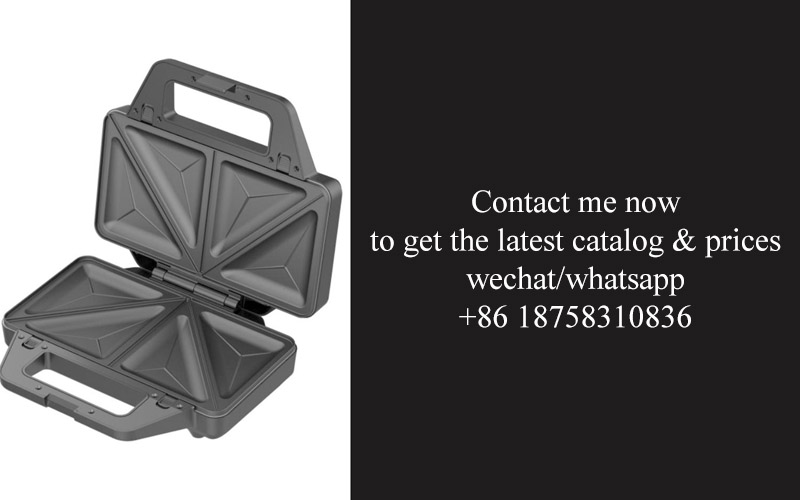
In the culinary world, the introduction of restaurant-grade air fryers has sparked a significant shift in how chefs approach cooking. These fryers are not just kitchen gadgets; they’re a game-changer for several reasons. From their ability to replicate restaurant-quality results to their health benefits, here’s why restaurant-grade air fryers are shaking up the industry.
Air fryers have long been popular in home kitchens for their ability to produce crispy fried foods with a fraction of the oil. However, the commercial-grade versions take this concept to a whole new level. They are engineered to handle the demands of a busy kitchen, offering consistent performance and reliability. The larger capacity and robust construction make them ideal for restaurants and commercial settings.
One of the standout features of restaurant-grade air fryers is their ability to provide a deep-frying experience without the deep-fat. This is thanks to the advanced technology that circulates hot air around the food, creating a crispy exterior while keeping the interior moist. Chefs can now offer patrons fried chicken, French fries, and even onion rings with a healthier twist, as these air fryers significantly reduce the amount of oil needed.
The precision and control that these fryers offer are unparalleled. With adjustable temperature settings and timers, chefs can perfectly tailor the cooking process to their specific needs. Whether it’s achieving the perfect golden brown on a batch of crispy chicken tenders or ensuring that a delicate onion ring doesn’t overcook, these fryers provide the flexibility that traditional fryers simply cannot match.
In the realm of health and wellness, restaurant-grade air fryers are a godsend. With the growing awareness of heart disease and obesity, restaurants are under increasing pressure to offer healthier menu options. These fryers allow establishments to maintain their reputation for delicious food while providing a healthier alternative to deep-fried dishes. This health-conscious approach can attract a wider customer base and enhance the restaurant’s image.
Another aspect that sets restaurant-grade air fryers apart is their energy efficiency. Traditional deep fryers require a large amount of oil and a substantial amount of energy to maintain high temperatures. In contrast, air fryers use less energy and can often be placed on a countertop, reducing the need for a dedicated fryer unit. This not only saves on utility bills but also frees up valuable kitchen space.
Moreover, the durability of these fryers is impressive. Constructed with stainless steel and designed to withstand heavy use, they are built to last. This is crucial for busy restaurants that require appliances that can withstand a constant stream of use without frequent breakdowns.
Restaurants are also recognizing the benefits of customization that air fryers offer. Many models come with a variety of accessories, such as baskets, grids, and trays, which allow for different cooking styles. This versatility means that chefs can use the same machine to prepare a range of dishes, from appetizers to desserts.
The impact of restaurant-grade air fryers extends beyond the kitchen. They have the potential to change how food is perceived and enjoyed. By offering a healthier, more sustainable option, these fryers encourage consumers to think differently about their dining choices. This shift in mindset can lead to a more conscious and eco-friendly approach to food consumption.
In the competitive world of dining, the ability to differentiate oneself from the competition is key. By adopting restaurant-grade air fryers, restaurants can offer a unique selling proposition that appeals to health-conscious consumers and those looking for a unique culinary experience. This can give them a significant edge in the market.
The integration of technology into the cooking process is another factor that makes restaurant-grade air fryers a game-changer. With features like remote monitoring and automated cooking cycles, these fryers offer a level of convenience that traditional fryers cannot provide. Chefs can focus on other tasks while the air fryer does its job, improving overall kitchen efficiency.
Finally, the sustainability aspect of these fryers cannot be overstated. With environmental concerns at the forefront of many consumers’ minds, restaurants that adopt eco-friendly cooking methods are likely to attract more patrons. The reduced oil usage and lower energy consumption of air fryers contribute to a smaller carbon footprint, making them an attractive choice for environmentally conscious operators.
In conclusion, restaurant-grade air fryers are a game-changer because they offer a healthier, more efficient, and versatile solution to traditional frying methods. Their ability to provide restaurant-quality results without the drawbacks of deep frying makes them an invaluable addition to any commercial kitchen. As the demand for healthier options continues to grow, these fryers are poised to become a staple in the culinary industry.

In the realm of high-end kitchen equipment, the role of factories in ensuring quality control and efficiency is paramount. From the meticulous craftsmanship to the cutting-edge technologies employed, these factories are the silent architects behind the seamless performance of restaurant-grade air fryers and other premium appliances. Let’s delve into the intricacies of this process.
The foundation of quality lies in the selection of raw materials. Factories that specialize in high-end kitchen equipment are meticulous about sourcing the best components. Whether it’s stainless steel for durability or advanced heat-resistant plastics, each material is chosen for its ability to withstand the rigors of professional use.
Precision engineering is another cornerstone of efficiency. Modern factories utilize computer-aided design (CAD) and computer numerical control (CNC) machines to craft components with precision. This not only ensures that parts fit together perfectly but also reduces the likelihood of defects that could compromise the performance of the final product.
In the world of high-end kitchen equipment, reliability is key. Factories implement rigorous testing protocols to guarantee that every air fryer meets the stringent standards required for restaurant use. These tests can include endurance testing, where appliances are subjected to continuous operation over extended periods to simulate years of use, and thermal testing to ensure they can handle the demands of high-heat cooking without failure.
Energy efficiency is a growing concern, and factories are responding with innovative solutions. Advanced insulation materials and optimized heat exchange systems are used to reduce energy consumption, which not only benefits the environment but also helps restaurants lower their utility bills.
Safety is non-negotiable in kitchen equipment. Factories incorporate multiple safety features into their designs, from overheat protection to automatic shut-offs in case of malfunction. These features are not just a legal requirement but a testament to the commitment to the well-being of users and those in the surrounding environment.
The assembly line is where the magic happens. Factories have developed sophisticated systems that streamline the production process while maintaining the highest standards of quality. Workers are trained to the highest standards, and the use of robotics and automation further enhances efficiency without compromising on precision.
Continuous improvement is a hallmark of any successful factory. Through ongoing research and development, these facilities are constantly seeking ways to innovate. This could mean developing new materials that offer better performance or creating new features that enhance the user experience.
In the realm of high-end kitchen equipment, the role of the factory doesn’t end with the manufacturing process. Post-production, these facilities often offer comprehensive after-sales support. This includes warranty services, maintenance tips, and even on-site repairs to ensure that the equipment remains in optimal condition throughout its lifespan.
The attention to detail in high-end kitchen equipment is often unseen but crucial. Factories invest in quality control teams that meticulously inspect each product at various stages of the production process. This ensures that any issues are caught early, preventing defects from reaching the end consumer.
As the demand for healthier cooking options grows, factories are also adapting. They are incorporating features into air fryers and other appliances that allow for healthier cooking methods, such as air frying, which uses little to no oil, compared to traditional deep-frying.
In conclusion, the factory’s role in the production of high-end kitchen equipment, particularly restaurant-grade air fryers, is multifaceted. It involves a combination of expert craftsmanship, advanced technology, rigorous testing, and a relentless pursuit of excellence. By focusing on quality control and efficiency, these factories are not just producing appliances; they are shaping the future of professional culinary experiences.

In the ever-evolving culinary landscape, the air fryer has emerged as a versatile tool that’s reshaping the way chefs approach cooking. Once a staple in home kitchens, the air fryer has now found its way into professional kitchens, bringing with it a wave of new cooking trends and techniques. Here’s how the air fryer is revolutionizing professional cuisine:
The air fryer’s ability to mimic the crispy texture of fried foods without the oil has made it a favorite among health-conscious diners. Chefs are now using this technology to create lighter, healthier versions of classic dishes, appealing to a broader audience who seek balance in their meals.
Professional air fryers are designed with precise temperature control and adjustable cooking times, allowing chefs to achieve consistent results every time. This level of control is crucial in high-volume kitchens where speed and consistency are key to maintaining quality.
The compact size of modern air fryers makes them perfect for space-constrained kitchens. Chefs can easily incorporate them into existing layouts without sacrificing valuable counter space. This efficiency is especially valuable in busy restaurants where every square inch counts.
One of the most significant trends in professional cuisine is the emphasis on sustainability. Air fryers consume less energy than traditional fryers, reducing the carbon footprint of restaurants. This eco-friendly approach is not only beneficial for the environment but also for the bottom line, as energy costs can be a substantial part of a restaurant’s operating expenses.
The versatility of air fryers is unparalleled. They can be used to cook a wide range of foods, from vegetables and meats to breaded items and desserts. This versatility allows chefs to experiment with new recipes and cooking methods, pushing the boundaries of what’s possible in the kitchen.
In the realm of taste, the air fryer has proven to be a game-changer. The technology allows for a crispy outer layer while retaining the moisture and flavor of the food inside. This results in dishes that are both visually appealing and delicious, enhancing the overall dining experience.
Professional air fryers often come with features like a dehydrating function, which is perfect for creating ingredients like herbs, spices, and dried fruits. This not only adds depth to a chef’s pantry but also reduces the need for pre-packaged, processed items.
The air fryer’s rapid cooking capabilities mean that chefs can prepare multiple dishes simultaneously, saving valuable time in the kitchen. This is particularly beneficial for restaurants that offer a variety of items on their menu, ensuring that all orders are ready promptly.
In the world of professional cuisine, the air fryer has also become a tool for innovation. Chefs are using it to create unique dishes that are both visually stunning and technically impressive. The air fryer’s ability to create a perfect crust on a variety of foods has opened up new possibilities for artistic presentations.
Moreover, the air fryer’s use in professional kitchens has sparked a renewed interest in traditional cooking techniques. Chefs are exploring how to incorporate these ancient methods into modern dishes, using the air fryer as a bridge between the two.
The air fryer’s role in professional cuisine is not just about efficiency and sustainability; it’s also about enhancing the flavor profile of dishes. The controlled cooking environment allows for a more even distribution of heat, which in turn results in a more nuanced and complex taste.
In conclusion, the air fryer’s new role in professional cuisine is a testament to the power of innovation and the desire for healthier, more efficient cooking methods. As the technology continues to evolve, we can expect to see even more creative uses of the air fryer in the years to come.
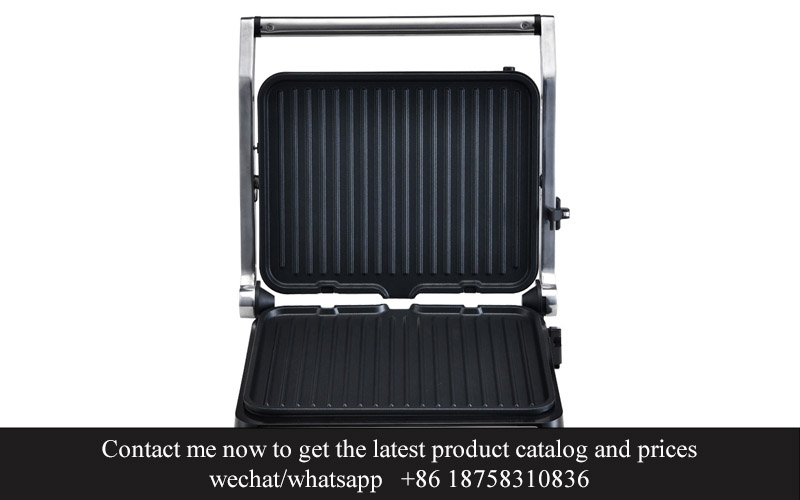
The integration of air fryers in the professional kitchen landscape has been nothing short of transformative. Once confined to the realms of home cooking, these appliances have now become a staple in top-tier dining establishments. Let’s dive into some case studies that highlight how leading restaurants are wholeheartedly embracing air fryers and revolutionizing their culinary practices.
In the upscale Italian restaurant “La Cucina Bella,” the executive chef has replaced the traditional fryer with a commercial-grade air fryer. This move not only reduces the oil usage by 80% but also significantly cuts down on the cleanup time, allowing the kitchen to focus more on creating intricate pasta dishes. The air fryer’s even heat distribution ensures that each bite is as crispy as it is flavorful.
At “The Gourmet Grill,” a steakhouse renowned for its prime cuts, the air fryer has been incorporated into the prep process for their signature seared steaks. By using the air fryer to pre-sear the meat at a lower temperature, the staff is able to lock in the juices while achieving a beautifully caramelized crust. This has not only impressed the patrons with the steak’s tenderness and taste but has also allowed the kitchen to prepare more steaks in a shorter time frame.
One of the most notable transitions to air fryers can be seen at “Sustainable Bites,” an eco-conscious eatery that prides itself on minimizing its carbon footprint. By adopting air fryers, the restaurant has drastically reduced its oil usage and the amount of waste generated from deep-frying. The innovative air fryers have even allowed the kitchen to experiment with previously impossible-to-cook vegetables, such as water chestnuts and artichokes, now served in a crispy, delightful form.
In the fast-paced world of quick-service restaurants, “Urban Delights” has found a clever way to use air fryers to prepare their signature chicken wings. The air fryer’s ability to cook the wings with a fraction of the oil traditionally required by a deep fryer has not only increased the wings’ shelf life but also improved the texture and flavor. Customers are thrilled by the crunchy exterior and juicy interior, making the wings a favorite among the lunch crowd.
A unique example comes from “Japanese Fusion,” where the air fryer has been employed to create tempura-like dishes with a healthier twist. By air frying vegetables and seafood at high temperatures, the restaurant achieves a light, crispy texture that is similar to deep-fried tempura without the excessive oil. This has expanded the menu options for diners looking for lighter fare while still enjoying the comforting taste of tempura.
For “Bakery Bliss,” an artisanal bakery that specializes in pastries and desserts, the air fryer has become a secret weapon. The bakery uses it to crisp up their fruit tarts and choux puffs, resulting in a flaky exterior that complements the rich, creamy fillings. The air fryer has also allowed them to experiment with healthier versions of their beloved treats, like air-fried beignets and mini éclairs, which are now a hit with their health-conscious clientele.
In the vegetarian and vegan sectors, “Vital Eats” has discovered that air fryers are perfect for making crispy kale chips, golden tofu, and even air-fried vegan cheese. The air fryer’s ability to achieve a perfect golden crispiness has become a game-changer for the restaurant, which now offers a variety of innovative plant-based dishes that mimic the taste and texture of fried foods without the negative health impacts.
These case studies showcase how restaurants across different culinary landscapes are integrating air fryers into their kitchens, leading to more efficient operations, healthier offerings, and satisfied customers. The versatility of air fryers has truly opened up a new chapter in the art of professional cuisine, making it a must-have appliance for any forward-thinking restaurant.
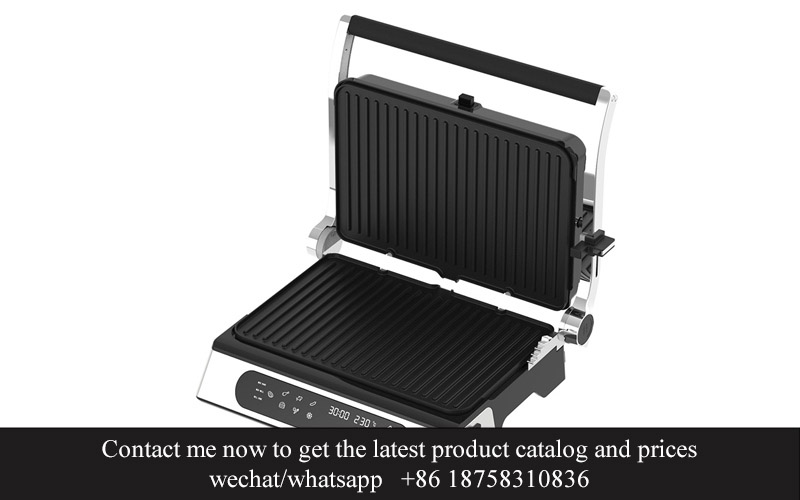
The shift towards sustainability has reshaped consumer preferences, and the foodservice industry is no exception. Air fryers, once a household favorite, are now making waves in the professional kitchen. Here’s how these eco-friendly appliances are redefining health and sustainability in cooking:
Air fryers operate on the principle of hot air circulation, which reduces the need for excessive oil compared to traditional frying methods. This feature alone makes them a healthier option, as it cuts down on the calorie content of fried foods. The science behind the eco-friendly advantage lies in the reduction of oil usage and the resulting decrease in waste and environmental impact.
In a world where climate change and resource depletion are pressing concerns, the energy efficiency of air fryers cannot be overlooked. These appliances use significantly less energy than conventional ovens and deep fryers. The compact design and efficient heat distribution ensure that the cooking process is quick and energy-saving, contributing to a greener kitchen and a smaller carbon footprint.
Moreover, air fryers are often made with sustainable materials. From the plastics used in their construction to the metals and ceramics, the industry is increasingly focusing on sourcing materials that are environmentally friendly and recyclable. This commitment to sustainability is not just a trend but a testament to the industry’s dedication to preserving the planet for future generations.
The health benefits of air fryers are not just about reducing oil and calories; they also extend to the reduction of trans fats. Traditional frying often leads to the creation of trans fats, which are known to be harmful to heart health. Air frying, on the other hand, maintains the integrity of the food’s natural fats, making it a healthier alternative.
Restaurants and foodservice operators are embracing air fryers for their ability to offer customers a variety of healthy, crispy fried dishes. From French fries to chicken wings, the versatility of air fryers allows chefs to create low-fat, low-calorie versions of popular menu items. This not only caters to health-conscious consumers but also aligns with the industry’s growing focus on wellness and responsible dining.
The sustainability aspect of air fryers also plays a significant role in food waste reduction. Since these appliances use less oil, there’s less risk of oil becoming rancid and needing to be discarded. This reduces the overall waste generated by the kitchen, contributing to a more sustainable operation.
In addition to environmental benefits, air fryers are also a cost-effective solution for restaurants. By reducing the amount of oil used, operators can save on their oil inventory costs. The longevity of air fryers, which often come with longer warranties and are built to withstand the rigors of commercial use, means that they are a wise investment with a good return on investment over time.
Educating consumers about the eco-friendly advantages of air fryers is also a key aspect of their rise in popularity. As diners become more environmentally conscious, they are more likely to choose restaurants that offer sustainable cooking methods. This has prompted many establishments to proudly display their use of air fryers as a part of their commitment to sustainability.
The health benefits are not just about calorie reduction; they also include the ability to cook a wider variety of vegetables and lean proteins without the need for excessive fat. This has opened up new opportunities for chefs to create innovative dishes that are both delicious and kind to the planet.
The integration of smart technology into air fryers has also played a role in their eco-friendliness. With features like auto-shutoff and adjustable temperature controls, these appliances ensure that energy is used efficiently and that food is cooked to perfection without unnecessary waste.
In conclusion, the eco-friendly advantage of air fryers is multifaceted, encompassing health, sustainability, and efficiency. As the foodservice industry continues to evolve, these appliances are poised to become a cornerstone in the quest for a more sustainable and health-conscious future.
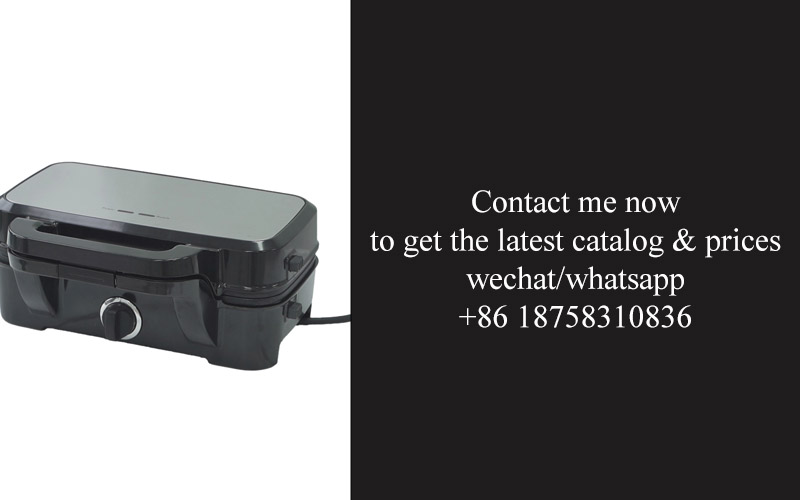
The air fryer, once a kitchen gadget, has transformed into a staple in both home and professional kitchens. But what lies ahead in the world of air fryer technology? Let’s explore the potential advancements and innovations that could shape the future of cooking.
Advancements in EfficiencyOne of the key areas for future improvement in air fryers is efficiency. Current models are already known for their energy-saving capabilities compared to traditional deep fryers, but there’s always room for enhancement. Imagine air fryers that can reduce cooking times while maintaining or even improving food quality. By integrating smart technology, manufacturers could optimize the heating element’s power consumption, ensuring that air fryers not only cook faster but also more sustainably.
Integration of Smart TechnologySmart appliances are becoming increasingly popular, and the air fryer is no exception. In the future, we could see air fryers that sync with smartphones and other devices, allowing users to monitor cooking progress remotely. These smart air fryers might also come with custom cooking programs, learning your preferences and adjusting the cooking temperature and time accordingly. The integration of IoT (Internet of Things) could lead to a world where your air fryer is not just a kitchen appliance but a personal chef, tailored to your taste.
Healthier Cooking OptionsAir fryers are already a healthier alternative to traditional frying methods due to their lower oil usage. However, the future might bring even more innovative cooking options. For instance, imagine air fryers that can create a vacuum-sealed environment, allowing for sous-vide-like cooking techniques with the convenience of an air fryer. This could result in food that’s both moist and flavorful, with the added benefit of precise temperature control, ensuring the perfect doneness every time.
Energy Harvesting InnovationsAn exciting area of development could involve energy-harvesting technology. Air fryers could potentially be designed to capture and reuse energy from the heat generated during cooking. This could mean using the heat to preheat the appliance or even to power other kitchen appliances, effectively turning your air fryer into an energy-efficient hub for your kitchen.
Personalization and CustomizationThe future of air fryers may also include a higher degree of personalization and customization. From adjustable temperature controls to interchangeable cooking trays, future models could offer users the ability to tailor their air fryer to their specific needs. This might include modular components that can be swapped out for different cooking functions, such as baking, roasting, or even dehydrating.
Advanced Heat DistributionOne common challenge with air fryers is ensuring even heat distribution. Future technology could address this issue by incorporating advanced heat distribution systems. This might involve a more intricate fan system, or even the use of ceramic elements that provide more consistent heat throughout the cooking chamber. By achieving perfect heat distribution, air fryers could produce more uniform results, making them even more versatile in the kitchen.
Food Sensing TechnologyImagine an air fryer that can sense the type of food being cooked and adjust its settings accordingly. By using sensors to detect moisture levels and texture changes, the appliance could optimize the cooking process to perfection. This would be particularly beneficial for delicate ingredients like vegetables, which require careful monitoring to prevent overcooking.
Collaboration with Chefs and Culinary ExpertsTo truly innovate, air fryer manufacturers might start collaborating more closely with chefs and culinary experts. These partnerships could lead to the development of unique cooking techniques and recipes that can only be achieved with the latest air fryer technology. Chefs’ insights could help push the boundaries of what air fryers can do, leading to groundbreaking innovations in the kitchen.
ConclusionThe future of air fryer technology is a blend of efficiency, personalization, and innovation. From energy-harvesting features to smart technology and health-focused advancements, the next generation of air fryers promises to revolutionize the way we cook. As these appliances become more integrated into our daily lives, we can expect to see a seamless fusion of convenience, sustainability, and culinary excellence. The air fryer of the future isn’t just a cooking appliance; it’s a tool that could change the way we think about food preparation altogether.